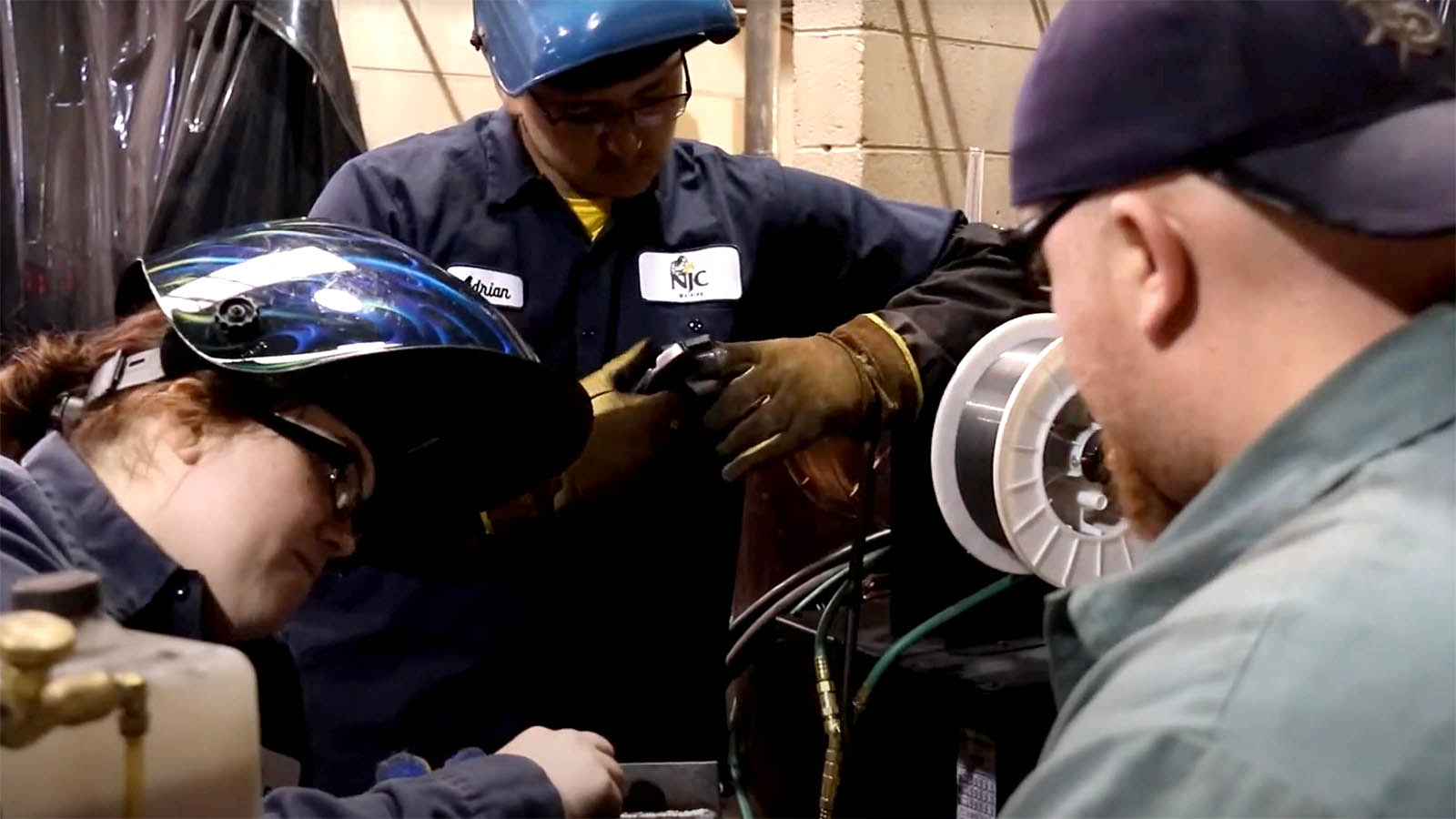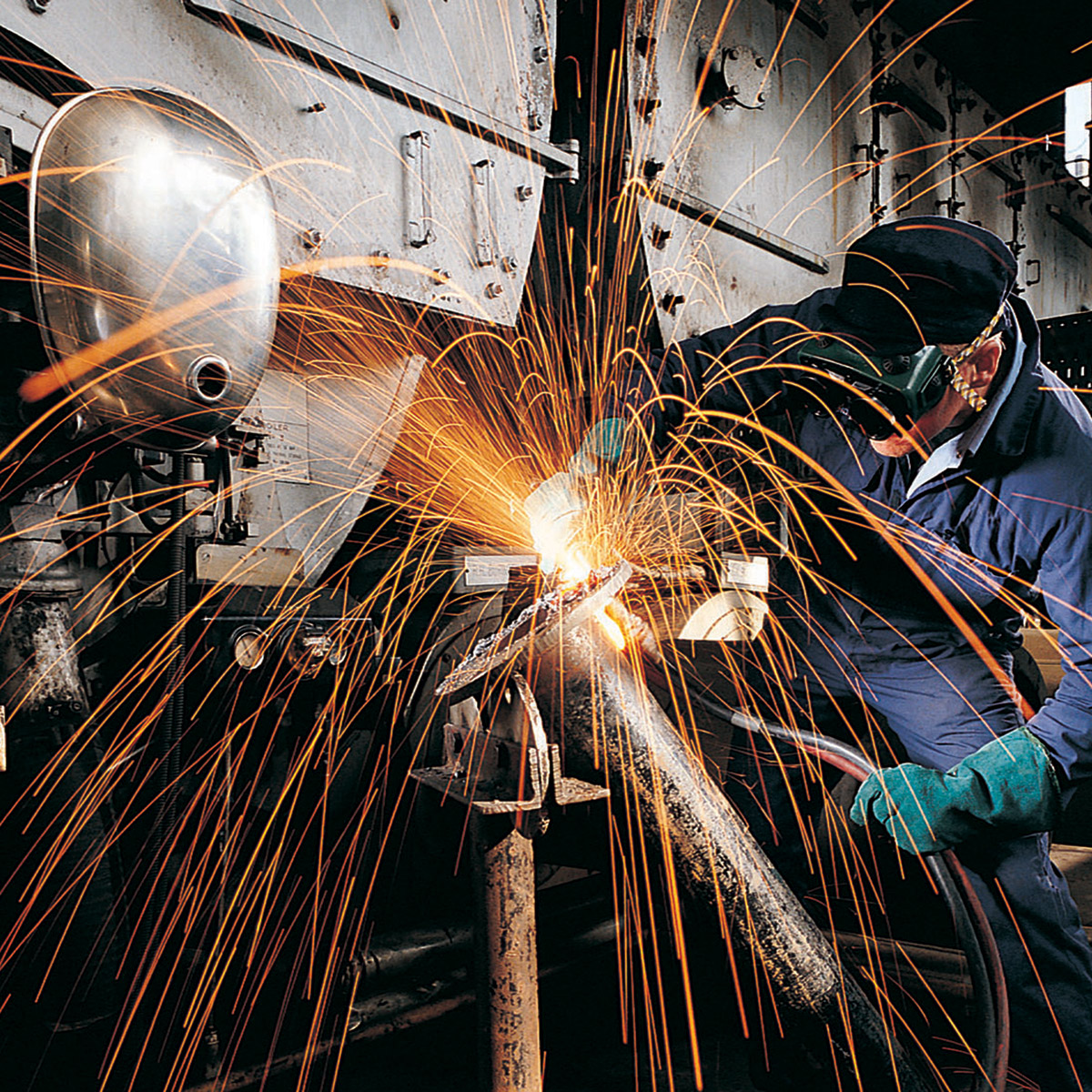Faculty

Staff

All Commencement Details can be found here

Northeastern Junior College's Welding Technology program offers an exciting career opportunity to learn a hands-on trade and gain skills that are in high demand. Students will graduate from the program with industry-recognized certifications and experience with the latest welding techniques and equipment.
With over 500,000 welding job openings nationwide and an average salary of over $47,000 per year, welding can be a rewarding career path. The skills and experience gained through Northeastern's program provide students an advantage in entering the workforce as professionals in manufacturing, construction, aerospace, automotive, and other industries.
If you're seeking an affordable education with real career benefits, Northeastern's Welding Technology program can help ignite your future as a certified welder.

At Northeastern's education benefits offered in Welding Technology have a range of options available to them. Whether you're looking to earn a degree or a certificate, the college has you covered.
The Associate of Applied Science in Welding Technology is a comprehensive program that includes hands-on training and two levels of GMAW, 5 levels and positions in SMAW, two positions in FCAW and three options in GTAW as well as OAW cutting and welding.
For those who want to specific welding training, the college offers certificates in each of the welding techniques and fabrication.
Looking to take your welding skills to the next level? Northeastern Junior College's Welding Technology Program might be just what you're looking for. What's different about this program? For starters, the welding school offers 6 start dates throughout the year, meaning you can enroll whenever it's convenient for you.
Additionally, the program is organized into five-week terms, allowing you to complete the program quickly and efficiently. Worried about living arrangements? Northeastern Junior College offers residence halls for students looking to live on campus, making student life a breeze and the program is affordable and offers financial aid options to those who need it.
And perhaps most importantly, this program is competency-based, meaning you'll be assessed on your skills and knowledge rather than arbitrary deadlines or grades. So, are you ready to take your welding expertise to the next level? Northeastern Junior College is ready for you.

Sometimes referred to by its subtypes metal inert gas (MIG) and metal active gas (MAG) is a welding technique in which an electric arc forms between a consumable MIG wire electrode and the workpiece metal, which heats the workpiece metal, causing them to fuse (melt and join).
Also known as manual metal arc welding, is a manual arc welding technique that uses a consumable and protected electrode. As the electrode melts, a cover that protects the electrode melts and protects the weld area from oxygen and other atmospheric gases.
Also known as dual shield welding, is a semi-automatic arc welding technique that is similar to metal active gas (MAG) welding.
Also known as tungsten inert gas (TIG) welding, is an arc welding technique that uses a non-consumable tungsten electrode to produce the weld.
Also known as oxy-fuel welding, is a process that relies on the combustion of oxygen and a fuel gas, typically acetylene.

For someone to enter into the workforce as a welder, or a welding related occupation, you should be able to answer yes to the following questions.
Do you have:
Currently the welding program resides at the Applied Technology Campus in a separate building to the South of the baseball diamond. It consists of 14 arc welding bays, 8 oxyacetylene welding/cutting stations, and 1 classroom, as well as various equipment used in most shops and manufacturing environments.
With the upcoming expansion project and unification of all Applied Technology Campus programs in one building, the welding program will expand to allow for additional space in both the lab and classroom. Facilities can be visited by either attending a discovery day or by scheduling an individual tour.
Welding work environments can vary from one extreme to the other. They can be very clean and quiet to very dirty and noisy. Indoors, outdoors, in space or underwater; welding can take place in almost every environment present on Earth or outside Earth’s atmosphere.
Welders, cutters, solderers, and brazers held about 404,800 jobs in 2016. The largest employers of welders, cutters, solderers, and brazers were as follows:
Most welders, cutters, solderers, and brazers work full time, and overtime is common. Many manufacturing firms have two or three 8- to 12-hour shifts each day, allowing the firm to continue production around the clock if needed. As a result, welders, cutters, solderers, and brazers may work evenings and weekends.
Welders, cutters, solderers, and brazers have one of the highest rates of injuries and illnesses of all occupations. They are often exposed to a number of hazards, including very hot materials and the intense light created by the arc. They wear safety shoes, heat-resistant gloves, goggles, masks with protective lenses, and other equipment to prevent burns and eye injuries and to protect them from falling objects.
The Occupational Safety and Health Administration (OSHA) requires that welders work in safely ventilated areas in order to avoid danger from inhaling gases and fine particles that can result from welding processes. However, they can minimize injuries if they follow safety procedures.
Being a part of welding in aspect of activities and clubs outside of regular welding classes is important for students to help with socializing and networking with other people in the welding world. We participate in American Welding Society activities and Skills USA welding competitions here at Northeastern.

